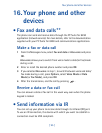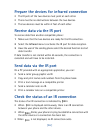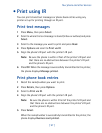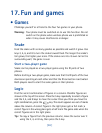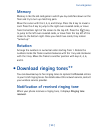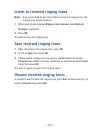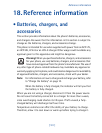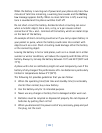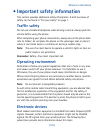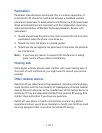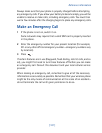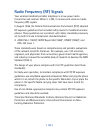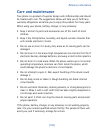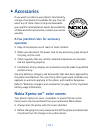[ 103 ]
Reference information
• Important safety information
This section provides additional safety information. A brief overview of
safety can be found in “For your safety” on page 1.
Traffic safety
Do not use a handheld telephone while driving a vehicle. Always park the
vehicle before using the phone.
After completing your phone conversation, always secure the phone back
into its holder; do not place the phone on the passenger seat or place it
where it can break loose in a collision or during a sudden stop.
Note:
The use of an alert device to operate a vehicle’s lights or horn on
public roads is not permitted.
Remember:
Safety—Your most important call.
Operating environment
Remember to follow any special regulations that are in force in any area,
and always switch off your phone wherever it is forbidden to use it.
Otherwise, the use of your phone could cause interference or danger.
When connecting the phone or any accessory to another device, read the
associated user guide first and obtain detailed safety instructions.
Note:
Do not connect incompatible products.
As with other mobile radio transmitting equipment, you are advised that,
for the satisfactory operation of the equipment and for the safety of
personnel, it is recommended that the phone should only be used in the
normal operating position. This position is when the phone is held to your
ear with the antenna pointing over your shoulder.
Electronic devices
Most modern electronic equipment is shielded from radio frequency (RF)
signals. However, certain electronic equipment might not be shielded
against the RF signals from your wireless phone. The following four
subsections provide more information about this topic.



